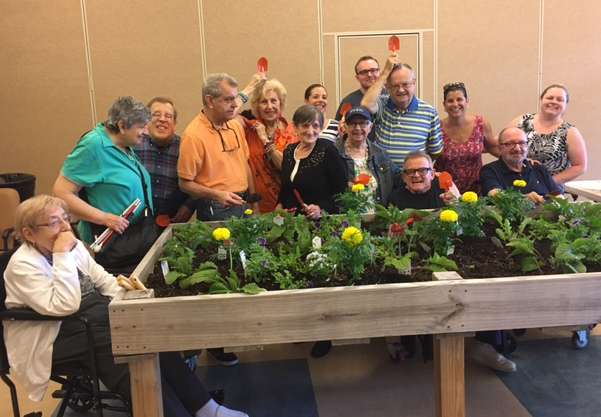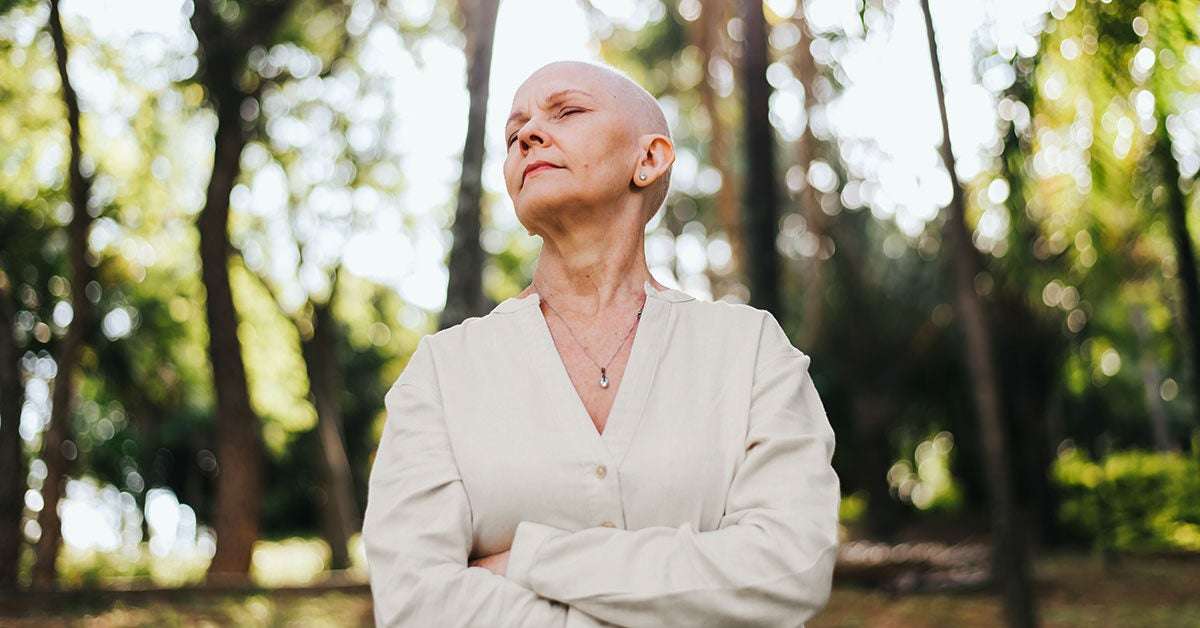 Horticultural therapy is a time-proven practice. The therapeutic benefits of garden environments have been documented since ancient times. In the 19th century, Dr. Benjamin Rush, a signer of the Declaration of Independence and recognized as the “Father of American Psychiatry,” was first to document the positive effect working in the garden had on individuals with mental illness.
Horticultural therapy is a time-proven practice. The therapeutic benefits of garden environments have been documented since ancient times. In the 19th century, Dr. Benjamin Rush, a signer of the Declaration of Independence and recognized as the “Father of American Psychiatry,” was first to document the positive effect working in the garden had on individuals with mental illness.
In the 1940s and 1950s, rehabilitative care of hospitalized war veterans significantly expanded acceptance of the practice. No longer limited to treating mental illness, horticultural therapy practice gained in credibility and was embraced for a much wider range of diagnoses and therapeutic options. Today, horticultural therapy is accepted as a beneficial and effective therapeutic modality. It is widely used within a broad range of rehabilitative, vocational, and community settings.
Horticultural therapy techniques are employed to assist participants to learn new skills or regain those that are lost. Horticultural therapy helps improve memory, cognitive abilities, task initiation, language skills, and socialization. In physical rehabilitation, horticultural therapy can help strengthen muscles and improve coordination, balance, and endurance. In vocational horticultural therapy settings, people learn to work independently, problem solve, and follow directions. Horticultural therapists are professionals with specific education, training, and credentials in the use of horticulture for therapy and rehabilitation. Read the formal definition of the role of horticultural therapists.
For a comprehensive overview of the practice of horticultural therapy, please read the AHTA Position Paper. To follow the latest media buzz on horticultural therapy, visit our blog.
Definition of a Horticultural Therapist
Horticultural therapists have a foundation of knowledge in plant science, human science, and horticultural therapy principles and experience in the application of horticultural therapy practices.
As the American Horticultural Therapy Association strives towards certification for horticultural therapists, public awareness of what is, and what is not, a horticultural therapist is essential for professional recognition.
The American Horticultural Therapy Association supports the definition that a horticultural therapist is someone who:
- Has a minimum of a bachelor’s degree in horticultural therapy, or the minimum of a bachelor’s degree with additional coursework in plant science, human science, and horticultural therapy.
- Has completed a 480-hour internship in horticultural therapy.
- Is professionally registered as a horticultural therapist with the American Horticultural Therapy Association as an HTR, Horticultural Therapist-Registered.
 To advance the profession, it is important that the public recognize horticultural therapists as professionals with specific education, training, and credentials in the use of horticulture for therapy and rehabilitation. Professional registration informs the public that the horticultural therapist has met the required education and experience to practice horticultural therapy.
To advance the profession, it is important that the public recognize horticultural therapists as professionals with specific education, training, and credentials in the use of horticulture for therapy and rehabilitation. Professional registration informs the public that the horticultural therapist has met the required education and experience to practice horticultural therapy.
The American Horticultural Therapy Association recognizes that there are individuals without professional credentials who represent themselves as practicing horticultural therapists having completed a certificate in horticultural therapy. While a certificate is of value in providing the horticultural therapy education, a certificate does not provide education in horticulture, human science, nor provide practical experience. The Association does not support the use of horticulture as therapy by individuals who do not have the required educational background nor possess professional credentials.
The Association recognizes that there are professionally credentialed practitioners who use horticulture as a therapeutic tool in their practice. Many credentialed professionals have completed a horticultural therapy certificate program. While the AHTA accredited certificate coursework provides valuable education, to develop a thorough understanding of the discipline, coursework in horticulture and human science is necessary. The Association welcomes and encourages, credentialed professionals to pursue professional registration with the American Horticultural Therapy Association.
Education for Horticultural Therapists

For those interested in pursuing a career in horticultural therapy, the American Horticultural Therapy Association (AHTA) offers the only recognized credential for horticultural therapists: HTR, Horticultural Therapist – Registered. The HTR credential may be granted after completing a standardized educational curriculum and an internship supervised by an AHTA Registered Horticultural Therapist. This curriculum is built on the foundation of a bachelor’s degree in horticultural therapy, or the minimum of a bachelor’s degree with additional coursework in plant science, human science, and horticultural therapy.
The American Horticultural Therapy Association also accredits select certificate programs. Horticultural therapy certificate programs are instructional programs for college credit that are designed to provide a foundation in the theory and application of horticultural therapy for diverse populations. In accrediting these programs, AHTA assures that each program meets nationally-endorsed standards in the profession, and meets the horticultural therapy requirements for AHTA’s voluntary professional registration program. It is important to know that upon completion of a certificate program one is not certified as a horticultural therapist. Currently, certification is not an option for horticultural therapists; however, work is being done to achieve this for all HTRs.
A Word About Therapeutic Gardens

A therapeutic garden is a plant-dominated environment purposefully designed to facilitate interaction with the healing elements of nature. Interactions can be passive or active depending on the garden design and users’ needs. There are many sub-types of therapeutic gardens including healing gardens, enabling gardens, rehabilitation gardens, and restorative gardens.
What makes a garden therapeutic? The basic features of a therapeutic garden can include wide and gently graded accessible entrances and paths, raised planting beds and containers, and a sensory-oriented plant selection focused on color, texture, and fragrance. Learn more by reading AHTA’s characteristics of therapeutic gardens.
Frequently, landscape designers collaborate with horticultural therapists to create beautiful spaces that accommodate people with a wide range of abilities. While these gardens may represent the ideal, successful horticultural therapy programs do not depend upon an elaborate garden design. Likewise, a professionally-designed therapeutic garden without a horticultural therapy program is unlikely to deliver to its full potential.
To learn more about therapeutic gardens, please explore:
American Society of Landscape Architects; Healthcare and Therapeutic Design Professional Practice Network.
Therapeutic Landscapes Network, A resource for gardens and landscapes that promote health and well-being.
How to Cultivate Your Mental Health with Horticultural Therapy
Gardening is a medium that’s very dear to our hearts. It can literally change lives.
Take horticultural therapy, for example. Horticultural therapy is used to improve the mental (and physical) well-being of people who need a bit of TLC. Firmly believing that gardening can reinvigorate mind, body and soul (and research backs this up!), horticultural therapists are on hand to help people live better lives.
But what is horticultural therapy exactly, and how can it benefit you? In this article, we take a look!
What is horticultural therapy?
Horticultural therapy uses gardens and plants to boost mental and physical well-being.
Instead of sitting on a couch and chatting to a therapist, you are instead encouraged to visit a communal garden. The garden is turned into a safe space where people can mix and mingle with others (or work by themselves) as they cultivate their garden — and their soul.
The idea is that a horticultural therapist assigns tasks and activities to each gardener, with the aim being that these activities go some way towards improving the individuals particular health needs and goals.
Sounds great! What are the benefits of horticultural therapy?
Horticultural therapy has been around since the 1950’s. The reason it’s lasted so long is that it offers a wide range of benefits:
Horticultural therapy boosts your mood! Let’s face it, our mood is key to our day. Sometimes, however, our moods don’t change from day to day — they stick for well over a month. If you’ve been in a bit of a funk for some time now, horticultural therapy might be the thing that turns your frown upside down. After all, who doesn’t feel good after they’ve spent time outdoors, soaking up nature?!
Horticultural therapy boosts your social skills. Horticultural therapy is designed to be social, and you’re encouraged to communicate with others in your gardens. As such, it improves social skills, promoting social participation and self-awareness. Not just this, but horticultural therapy could arm you with better interpersonal skills that can help you land a different job. If you’ve always wanted to improve your people skills and meet new people, horticultural therapy could help.
Horticultural therapy lowers stress. Who needs more stress in 2021? No one! It seems we’re all a little too stressed at the moment. But what better way to reduce your stress levels than via nature? In fact, studies have shown that even just looking at plants for 3 minutes can be enough to lower stress and anxiety considerably. Just imagine what can happen if you spend your day cultivating your garden?
Horticultural therapy can help with memory. If you’re struggling with memory and cognition, I know how hard that can be. But horticultural therapy has been shown to reduce attention fatigue while at the same time boosting memory and cognitive awareness. Through horticultural therapy sessions, you might find also that your levels of concentration and alertness improve.
Cool. But is horticultural therapy right for me?
Horticultural therapy is pretty much for everyone who feels as though life has given them a bit of a kick lately. It’s for kids, for teens, for young adults; it’s for older adults, and it’s even for the elderly.
It’s aimed at people with all manner of mental, emotional, and physical problems, including learning disabilities, depression, ADHD, and even conditions such as dementia and stroke.
Ultimately, horticultural therapy is used as a sort-of rehabilitative program (or therapy) for spiritual, emotional, social, physical, and cognitive benefits. It connects you with others and restores your body, mind and soul. The outcome is always a positive one!
How can I start horticultural therapy?
There are really two ways. You can either join a garden project, or you can simply start gardening at home.
If you’d like to join a gardening project, you typically need to be referred by your doctor (as well as funded by them). Alternatively, you may be referred by your care professional or a social worker. These projects are run by horticultural therapists who gave completed specialist training programs, and are experts at what they do. They are qualified in horticulture, teaching, health, and social care.
If the place where you live doesn’t have any local horticulture therapy projects, worry not! You could join a community garden, organize one by yourself, or simply volunteer on a farm.
If you’d prefer to start your own little garden project at home, you can start with these 5 plant ideas that are easy to take care of and are especially useful for mental health.
Lavender
Lavender is one of the most calming plants there is, possessing as it does a sedative quality. It’s especially helpful if you’re having trouble sleeping. It also doesn’t need too much care!
Rosemary
Rosemary requires good low-maintenance ground cover because it can get quite large. But it’s ideal for memory problems and is overall a highly stimulating plant.
Early spring-flowering bulbs
Spring will soon be in the air, but before it arrives, why not chase those winter blues away with Iris reticulata? It won’t be out until February, but when it does its sublime purples and blues will grant you a much-needed pick-me-up.
Thyme
Thyme is typically used to treat children who are struggling with mental conditions such as ADHD. But it’s great for adults too, and has an especially unique smell that’s super empowering for the senses.
Anything that reminds you of childhood
Lastly, I don’t know about you but whenever I feel especially gloomy and can’t seem to lift myself up, I like to reacquaint myself with the things I enjoyed as a child.
Surrounding yourself with plants that are evocative of childhood (whatever they may be for you) will stir your soul and, hopefully, take you back to a better time full of hope and optimism.
What’s next?
There isn’t much else that’s quite as soul-stirring as horticultural therapy. Nor is there something as colorful and beautiful!
If you think horticultural therapy is right for you, the next step is to either find a local gardening project that’s suitable or work on creating your own gardening project at home. On that note, don’t forget to check our articles about practicing urban homesteading, starting a balcony garden, or 5 easy-to-grow-at-home vegetables!



